In the past two years, the work of dismantling county-level units all over the country seems to have collectively ceased.
Since last May, there have been documents stating a “strict control over the dismantling of counties and establishment of cities and districts.”
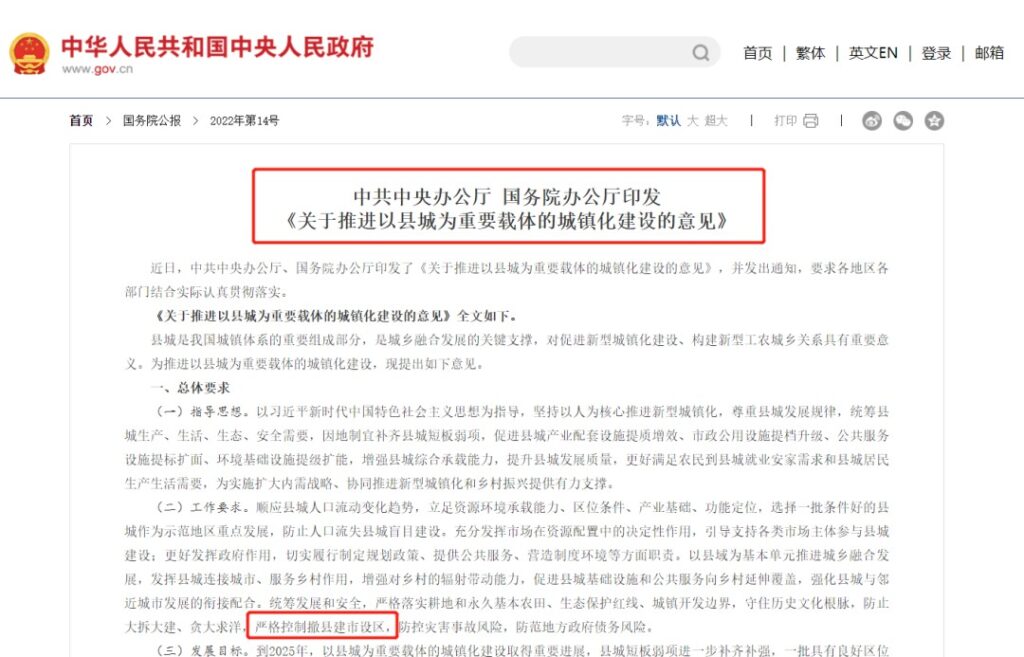
By early July of this year, the Jiangsu Provincial Government also stated that it would adjust the dismantling of counties and establishment of districts in the 14th Five-Year Plan in accordance with national requirements. The tightening of control is clear.
This means that the county cities that previously depended on the development of big cities will become increasingly independent in the future.
I’m not too surprised by this, as the economic growth in the county regions has been rapid in recent years, and discussions about county cities have been heated. In the second half of urbanization, the search for new economic growth poles is also urgent.
County cities are precisely the way to grasp this.
Those who detected this signal earlier than us are undoubtedly the sensitive major consumer brands.
In the past two years, some county cities far outside the eighteenth line have also attracted well-known brands such as Starbucks and Nayuki to mine for gold.
This year, Xicha only took 3 months to open 278 stores in third, fourth, and fifth-tier cities.

Last week, a friend posted on WeChat Moments, which refreshed my understanding of current county cities.

In small county cities, such boutique coffee shops are everywhere.
Judging from a cup of milk tea or coffee, the boundary between county cities and Beijing, Shanghai, Guangzhou, and Shenzhen seems to be blurring.
Not only policy and consumption, but from all aspects, the timing for the transformation of county cities has arrived.
As the largest city foundation in China, county cities actually accommodate more than 60% of the registered population in the country, and I am one of them.
As a young person who left the county city and works in a first-tier city, in countless homecomings and journeys, I have witnessed the changes in life and city in the county cities.
The county cities of the past could not keep young people.
Over the past thirty years, our country’s urbanization rate has increased from 30.4% in 1998 to 65.22% in 2023.
Behind the numbers is a continuous and massive social transformation.
County cities, as the most subtle and sensitive units in Chinese society, are also constantly changing.
Therefore, the population of county cities has grown rapidly in recent years, and the scale of the city has been constantly expanding.
But in reality, many people’s perception of county cities seems to still be multi-faceted backwardness in transportation, economy, and city interfaces.
What follows are issues such as traditional industries failing to develop, poor living environment, and lagging public services.
For the hundreds of thousands, or millions of people in county cities, these are not labels, but heavy realities of life.
Today, according to information on the Shandong Development and Reform Commission’s official website, compared to the national figure of 65.22%, the overall urbanization rate of our country’s county region is still less than 40%.
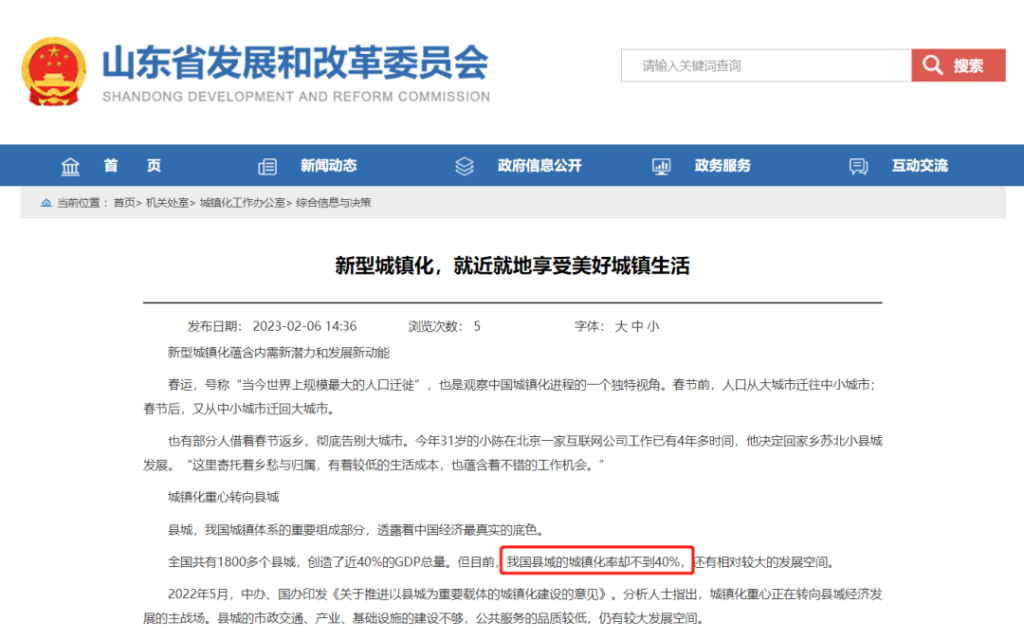
And with the acceleration of urbanization, the economic gap in county development is growing.
Currently, there are 52 counties in the country with a GDP of over 100 billion, but by 2021, about 60% of the counties still had a GDP below 20 billion. These county cities are mostly located in the central and western regions, and even some provincial capitals’ subordinate counties have GDP levels lower than eastern coastal county cities.
Take Zhengzhou in Central China as an example. There are 5 county-level cities and 1 county under its jurisdiction. I’ve sorted out the economic development of these county-level cities or counties last year.
As a major city in central China, Zhengzhou has a permanent population of over 12 million, but the economic report card of the counties under its jurisdiction is not impressive.
Looking at Suzhou in the east, the same population level is a different scene.
Suzhou has 4 county-level cities under its jurisdiction, namely Kunshan, Zhangjiagang, Changshu, and Taicang. I also collected their data, and the comparison is obvious:

All are over 100 billion, and these four counties all rank among the top 20 counties in national GDP, with Kunshan always being the top.
So, in this wave of urbanization, not only the 6 counties (cities) under the jurisdiction of Zhengzhou are restricted by backward hardware and economic level, but most of the county cities in the central and western regions are also unable to make efforts.
This year, only 2 out of the top ten county cities in the country are in the central and western regions.

And such county cities are less and less able to retain young people, especially the 80s and 90s generations, who basically grew up with the tide of urbanization and were the first to respond to the call of the times.
From the rise of first-tier cities to the focus on developing major city clusters, countless better opportunities are in sight. As a result, county cities are left behind by many young people.
As an intermediate station between the end of the city and the beginning of the countryside, county cities can be prosperous if they advance and stable if they retreat. But for them, it’s just a transitional stage for studying and working, a temporary place to stay. Whether they’re students or young people, they’re all moving towards cities with more educational and employment resources.
The county city is just an awkward hometown that you only return to during the New Year.
Of course, the stability of county cities has also become the last safe haven for some young people who do not want to wander. Therefore, in recent years, being a civil servant seems to be the only way for county cities to retain a part of young people.
Many young people struggling in big cities have the last fallback in their hearts: “If nothing else works, go back to my hometown and take the civil servant exam.”
But more young people are still choosing to leave.
Over the past 20 years, these county cities that have continuously lost young people have also gradually lost their vitality for development and have fallen far behind in the process of urbanization.
However, in recent years, the county town has begun to undergo unexpected changes.
The emphasis on the development of county economies in the 14th Five-Year Plan, and the recent tightening and integration of county markets into cities, both indicate that the time for county towns has come.
In addition to the 52 counties with a GDP of over 100 billion, a large number of counties with strong industrial economies are also rising.
It can be said that today’s county towns are welcoming their second spring.
For example, many previously unknown county towns have started to gain fame through the Internet. In the last two years, the cosmic center that dominated the hot search rankings on various platforms, Cao County in Shandong’s Heze City, is a typical example of the rapid rise of county industries in recent years.

Actually, before 2010, the per capita GDP of Cao County was at the bottom in Shandong. After the rise of the Hanfu trend, in 2021, Cao County quickly took over the domestic Hanfu market with the help of e-commerce.
In the first quarter of this year, the sales of Hanfu in this county alone reached 1.038 billion yuan, accounting for nearly one-third of the national market.
In addition, the coffins exported from Cao County also account for 80% of the national market, almost monopolizing the Japanese market.
With the boost of these two industries, in the “Top 100 Counties List of Taobao Villages” released by Alibaba Research Institute in 2020, Cao County ranked second, only behind Yiwu.
There’s also the explosive popularity of Village Supermarkets, which also come from Rongjiang County, Guizhou, attracting tens of thousands of viewers nationwide.

It even received attention from international football superstars like Owen and Messi, as well as famous CCTV host Han Qiaosheng, with scenes comparable to the “World Cup”.
On June 28, the Rongjiang Duanyu Tourism Department announced that local tourism revenue had exceeded 440 million yuan.
Rongjiang County quickly became a bright new star among many county towns.
And these county towns, which are gradually entering the public’s view, are receiving a noticeable tilt of resources.
The first is policy support.
For example, over 60% of hot and sour noodles nationwide actually come from a small county town called Tongxu in Henan.
In recent years, in order to develop the hot and sour noodle industry, the local government has given extreme policy support, even issuing a red-topped document to build Tongxu into the “Hot and Sour Noodle Capital of China”.
I have roughly sorted out the government actions of the past two years:
It must be said, they are indeed very dedicated.
Secondly, these county towns are constantly attracting the aggregation of industrial resources.
As you have probably noticed, the current top 100 county towns in the country all have their own characteristic pillar industries.
In order to break out, every county town is amplifying its industrial advantages and occupying the national and even global market.

And industry is actually the lifeblood of the economic development of county towns, providing a large number of employment and living opportunities.
Take Suixian as an example, it was known as the “Central Plains Shoe Capital” a long time ago.
In recent years, as a base of China’s shoe manufacturing industry, Suixian has continuously attracted 427 well-known shoe companies such as Anta, Tebu, and Zulijian to set up factories here.
In 2021, Hongxing Erke also built a shoe and garment industrial park in Suixian, providing more than 3,000 jobs.

The aggregation of these industries not only allows local people in the county to find jobs near their homes, but also attracts more enterprises and talents from big cities, drawing young people back.
However, what I did not expect was that capital forces are now also beginning to enter county towns.
In recent years, IPOs of county town companies have been common.
According to statistics from the Securities Times, there are currently nearly 900 county-level listed companies in the domestic capital market, accounting for about one-sixth of the total.
I have compiled some of them, and I must say I was quite surprised:
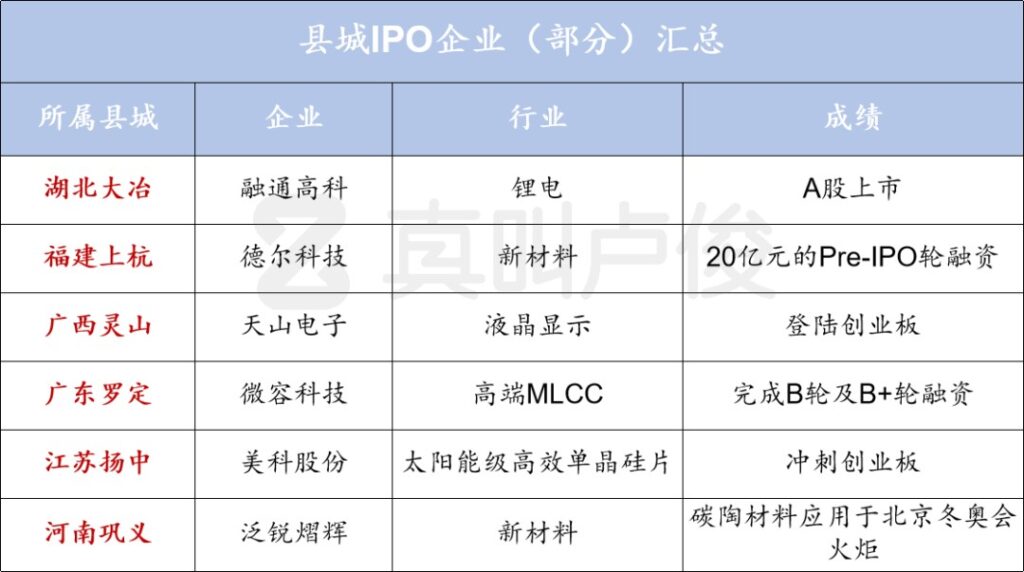
These county town IPO companies are currently attracting a large amount of social capital originally belonging to big cities, as well as government guiding funds.
Data from Qingke shows that in the first half of 2022 alone, the proportion of newly established county-level government guiding funds has already reached 50%.
This shows that the capital market is scrambling to land in the county economy.
So in combination with the previous context, the county towns that can take advantage of this wave of county benefits in the future probably fall into three categories:
One is satellite cities with geographical advantages, like Kunshan, which occupy various resources of large city clusters.
The second type is functional industrial county towns, such as the manufacturing and tourism counties mentioned earlier.
And another part is those county towns where serious population outflows have occurred due to resource depletion.
In the “14th Five-Year Plan for the Revitalization and Development of Special Types of Regions” in 2021, it is clearly stated that we should “support the transformation of energy-depleted county towns”.

This means that when the ups and downs of county towns come to an end, there is still a lot of space worth exploring in the development of the county economy in the next stage.
In recent years, works of art have also been another perspective on the changes in county towns.
Previously, we seemed to seldom pay attention to county towns, because with the rapid development of big cities and the sucking effect, more and more attention and resources were concentrated on the first and second tier cities, and county towns became blind spots in public vision.
In the past, they only sporadically appeared in works of art and had few audiences, but it also proved that there have always been some people moved by them.
For example, the county town in Shanxi under the lens of Jia Zhangke represents the changes of county towns under the commodity economy.
In “Xiao Wu”, a lot of KTVs and game halls sprouted up in the small county town like bamboo shoots after a spring rain, washing the senses of young people in the county town.

But in “Platform”, the story develops slowly and lacks dramatic tension.
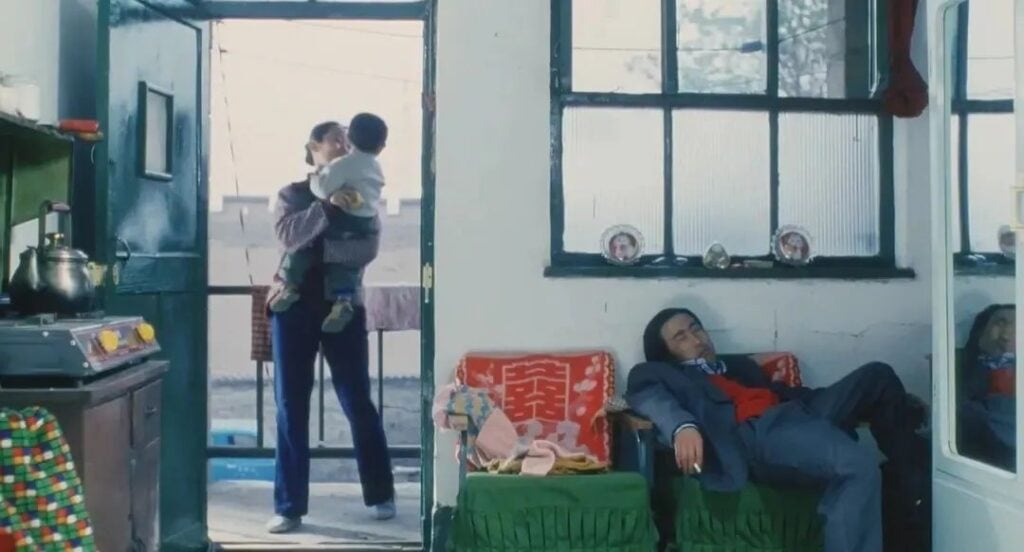
This is the most authentic characteristic of county town life, long and idle.
These films have all truthfully recorded the evolution of county towns under the wave of the times.
And today, the rise and fall of county towns, the futile efforts of young people and their departure for other places, are still the themes of many film and music works.
On Bilibili, popular edited videos about county towns have many views exceeding one million.

Young people are listening to the rock music of “North China Wave Revolution”.
In the bullet screen and comment section, they leave their nostalgia and deep affection for the county town, and some are also choosing to return home.
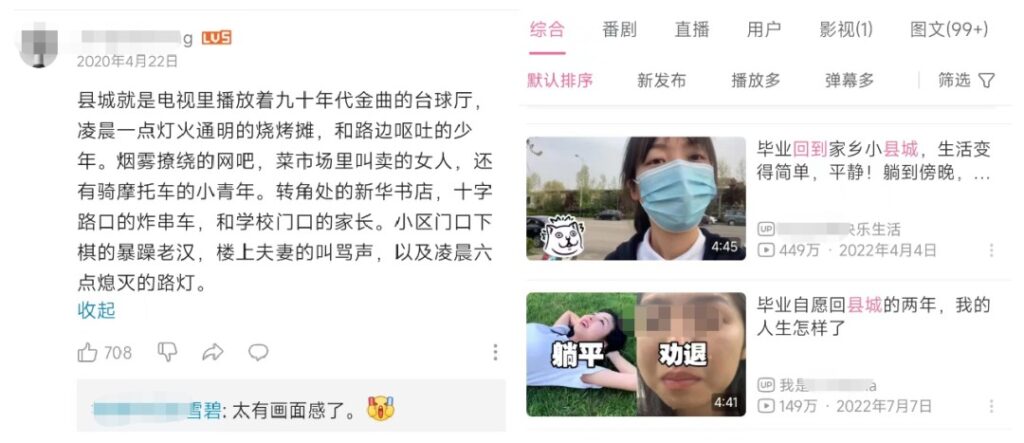
However, the county town under the focus of art is always carved too profoundly.
In fact, people living in county towns all have a kind of ordinary and romantic resilience.
A day in the county town begins with the rolling door opened by the breakfast shop owner.
People in the county town are also striving, working hard in various agricultural trade and clothing wholesale markets.

